As an Amazon Associate, I earn from qualifying purchases
Heel spurs, a common cause of heel pain, can significantly impact your daily life, especially if you have a job that involves prolonged periods of standing or walking. Finding the right work shoes becomes crucial to managing and alleviating the discomfort associated with heel spurs. In this guide, we’ll explore the features and considerations for choosing work shoes that cater to individuals dealing with heel spurs.
Definition of Heel Spurs
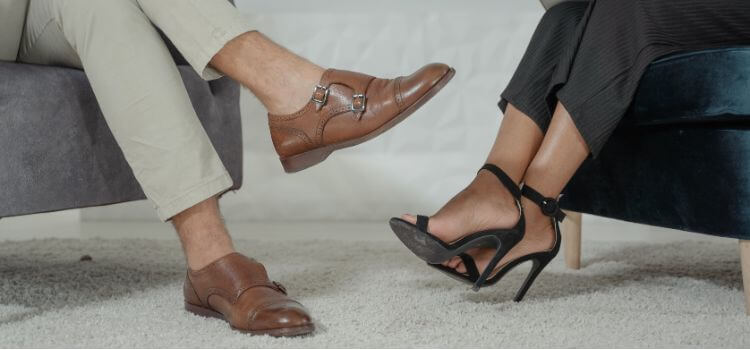
Heel spurs are bony outgrowths that form on the underside of the heel bone, often caused by the prolonged strain on foot ligaments. These protrusions can result from conditions like plantar fasciitis and tend to cause pain and discomfort in the affected area.
Diagnosis typically involves imaging tests, and treatment may include proper footwear, orthotic inserts, and lifestyle adjustments to alleviate symptoms. Addressing the root causes and choosing supportive shoes are crucial to managing heel spurs and promoting overall foot health.
Impact on Daily Life
The impact of heel spurs on daily life is significant, as these bony protrusions on the heel bone can cause persistent pain and discomfort. Individuals with heel spurs often experience difficulty performing routine activities, such as walking or standing, due to the sharp pain associated with each step.
This discomfort can limit mobility, affecting overall productivity and quality of life. Choosing appropriate footwear becomes crucial to mitigating the impact of heel spurs, allowing individuals to engage in daily tasks with greater comfort and ease.
Importance of Proper Footwear
The importance of proper footwear in managing heel spurs cannot be overstated. Wearing the right shoes is essential for individuals dealing with this condition, as it can significantly alleviate discomfort and prevent further complications. Well-designed footwear provides essential features like arch support, cushioning, stability, and shock absorption, all of which contribute to reducing strain on the heel.
Choosing the appropriate work shoes not only enhances comfort during daily activities but also plays a crucial role in promoting overall foot health. Prioritizing proper footwear is a proactive step toward managing heel spurs and ensuring long-term well-being.
Understanding Heel Spurs

1. Causes and Risk Factors
The causes and risk factors of heel spurs involve a combination of factors contributing to the development of these bony protrusions on the heel bone. Prolonged strain on the foot ligaments, often associated with activities like running or excessive standing, is a common cause.
Other risk factors include obesity, poorly fitting shoes, and conditions like plantar fasciitis. Individuals with flat feet or high arches may also be more prone to developing heel spurs. Understanding these causes and risk factors is crucial in addressing the root issues and implementing preventive measures to manage and alleviate the discomfort associated with heel spurs.
2. Symptoms
Recognizing the symptoms of heel spurs is essential for early intervention and effective management. The primary symptom is a sharp, stabbing pain in the heel, particularly during weight-bearing activities like walking or standing. This pain may intensify in the morning or after prolonged periods of rest. Individuals with heel spurs may also experience inflammation and tenderness in the affected area.
As the condition progresses, the pain can become chronic, impacting daily activities and overall mobility. Being attentive to these symptoms allows for timely diagnosis and the implementation of strategies, including appropriate footwear, to alleviate discomfort associated with heel spurs.
3. Diagnosis
Diagnosing heel spurs typically involves consulting a healthcare professional who will perform a thorough examination. Medical history, including symptoms and lifestyle factors, is considered. Imaging tests, such as X-rays, are commonly employed to visualize the bony protrusions on the heel bone. These images help confirm the presence of heel spurs and rule out other potential causes of heel pain.
Additionally, physical examinations may include assessing the range of motion and tenderness in the affected foot. A comprehensive diagnosis is crucial in tailoring an effective treatment plan, which may involve lifestyle adjustments, appropriate footwear, and other interventions to manage the symptoms associated with heel spurs.
Choosing the right work shoes is crucial for ensuring comfort, safety, and overall well-being on the job.
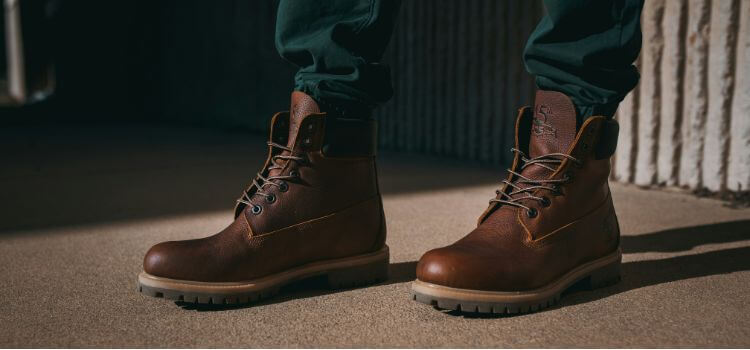
1. Impact on Foot Health
The impact of heel spurs on foot health is substantial, as these bony protrusions can lead to various complications. The persistent strain on the foot ligaments caused by heel spurs may contribute to conditions such as plantar fasciitis and Achilles tendonitis. The discomfort and inflammation associated with heel spurs can affect the overall structure and function of the foot.
Choosing footwear that provides adequate support and cushioning becomes crucial to mitigating this impact on foot health. Addressing heel spurs promptly not only alleviates immediate symptoms but also contributes to maintaining the overall well-being and functionality of the feet.
2. Prevention of Further Complications
Preventing further complications is a key consideration for individuals dealing with heel spurs. Proper footwear plays a crucial role in this preventive approach, offering support and cushioning to minimize strain on the affected area. Additionally, maintaining a healthy weight through regular exercise can reduce the burden on the feet.
Taking breaks during prolonged periods of standing or walking and incorporating stretching exercises can help alleviate tension and prevent the exacerbation of heel spurs. Regular foot care, including monitoring symptoms and addressing them promptly, contributes to the prevention of complications like plantar fasciitis. By adopting these measures, individuals can actively manage heel spurs and reduce the risk of additional foot-related issues.
3. Increased Comfort and Productivity
Wearing appropriate work shoes for heel spurs goes beyond addressing pain; it directly impacts comfort and productivity. The right footwear, with features like arch support, cushioning, stability, and shock absorption, enhances overall comfort during extended periods of standing or walking. As discomfort diminishes, individuals find themselves more focused and productive in their work.
The positive correlation between comfort and productivity underscores the importance of investing in suitable shoes, allowing individuals to perform their tasks with greater ease and efficiency. Choosing the right work shoes becomes a proactive step toward not only managing heel spurs but also promoting a more comfortable and productive work experience.
Features to Look for in Work Shoes for Heel Spurs

1. Arch Support
Arch support is a critical factor in selecting work shoes for individuals dealing with heel spurs. The arch of the foot, the curved area along the bottom, requires proper support to distribute weight evenly and reduce strain on the heel. Shoes with adequate arch support help maintain the foot’s natural alignment, preventing excessive stress on the ligaments and minimizing discomfort associated with heel spurs.
When choosing work shoes, individuals should prioritize models designed with built-in arch support to ensure a more comfortable and supportive experience throughout the day. This feature is instrumental in promoting foot health and mitigating the impact of heel spurs on daily activities.
2. Cushioning
Cushioning is a crucial aspect of work shoes for heel spurs, providing essential comfort and shock absorption. Shoes with ample cushioning help alleviate the impact on the heel during each step, reducing the jarring effect that can exacerbate the discomfort associated with heel spurs. The extra padding within the shoe serves to absorb shocks and distribute pressure more evenly across the foot, particularly in the heel area.
Choosing work shoes with sufficient cushioning is essential for individuals with heel spurs, as it enhances overall comfort and minimizes the strain on the sensitive structures of the foot, contributing to a more supportive and pain-free experience.
3. Stability

Stability is a critical factor to consider when selecting work shoes for individuals with heel spurs. Shoes that provide stability offer a secure and supportive foundation for the foot, minimizing unnecessary movements that can aggravate heel pain. The stability in the shoe design helps individuals maintain a balanced and controlled stride, reducing the risk of additional strain on the heel area.
Choosing work shoes with stability features is essential for those with heel spurs, as it promotes a more secure and comfortable experience during daily activities. This feature contributes significantly to preventing further complications and supporting overall foot health in individuals dealing with heel spurs.
4. Shock Absorption
Shock absorption is a key consideration in the selection of work shoes for individuals with heel spurs. Shoes equipped with effective shock absorption features help dissipate the impact and pressure exerted on the heel during activities like walking or standing. This cushioning mechanism reduces the stress on the foot’s sensitive structures, providing relief to individuals dealing with heel spurs.
Opting for work shoes designed with superior shock absorption helps minimize discomfort and contributes to an overall more comfortable experience, allowing individuals to engage in daily tasks without exacerbating heel pain. Prioritizing this feature is crucial for those seeking optimal support and protection against the impact associated with heel spurs.
Recommended Brands and Models

1. Brand A: Model X
Brand A’s Model X stands out as an excellent choice for individuals dealing with heel spurs. Renowned for its exceptional arch support, this model provides the necessary structure to distribute weight evenly, reducing strain on the heel. Additionally, the shoe offers a comfortable fit, making it suitable for extended wear during work hours. With a focus on both functionality and style, Brand A’s Model X caters to the specific needs of those seeking relief from heel spurs while ensuring a stylish and supportive footwear solution for daily use.
2. Brand B: Model Y
Brand B’s Model Y emerges as a top-notch option for individuals coping with heel spurs. Notable for its durability, this model is crafted to withstand the rigors of daily wear while providing the stability essential for managing heel pain. The shoe’s design focuses on delivering a secure fit, minimizing unnecessary movements that could exacerbate discomfort.
Brand B’s commitment to both resilience and support makes Model Y a reliable choice for those seeking long-lasting relief and stability in their work shoes, making it a standout option in the realm of footwear for individuals dealing with heel spurs.
3. Brand C: Model Z
Brand C’s Model Z presents itself as a versatile and popular choice for individuals managing heel spurs. This model seamlessly combines style with functionality, offering a footwear solution that addresses both comfort and aesthetic preferences. The Model Z is designed with features like arch support, cushioning, and stability, making it well-suited for those seeking relief from heel pain.
Brand C’s commitment to blending fashion with foot health ensures that individuals can confidently rely on Model Z to provide the necessary support while maintaining a stylish appearance. This makes Brand C’s Model Z a sought-after option for individuals prioritizing both comfort and aesthetics in their work shoes.
Tips for Proper Foot Care at Work
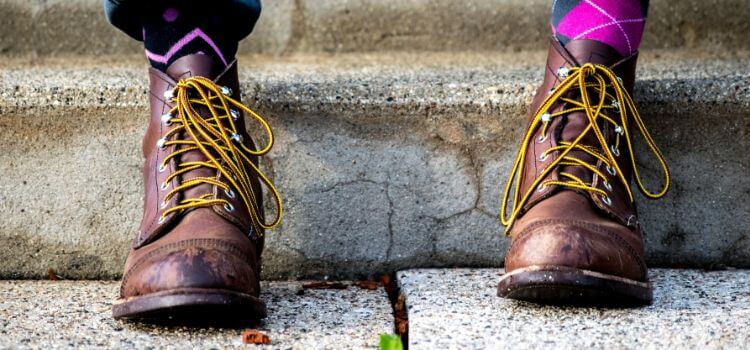
1. Regular Breaks and Stretching
Incorporating regular breaks and stretching into your daily routine is essential for managing heel spurs effectively. Taking short breaks during extended periods of standing or walking helps alleviate tension and reduce strain on the feet. Simple stretching exercises, focusing on the calves and Achilles tendon, can enhance flexibility and promote better foot function.
These practices not only provide relief from immediate discomfort but also contribute to long-term foot health. By making regular breaks and stretching a habit, individuals with heel spurs can proactively manage symptoms and enhance overall comfort during work hours.
2. Proper Sizing and Fit
Ensuring proper sizing and fit of your work shoes is paramount, especially when dealing with heel spurs. Ill-fitting shoes can exacerbate discomfort and contribute to additional strain on the heel. Take the time to measure your feet accurately and choose shoes that provide ample room, particularly around the toe area.
A snug yet comfortable fit ensures that the shoes adequately support your foot structure, minimizing the risk of friction and pressure points. Prioritizing proper sizing and fit is a proactive step toward preventing further complications and optimizing the supportive benefits of work shoes for individuals managing heel spurs.
3. Custom Orthotic Inserts
Custom orthotic inserts are a valuable addition for individuals dealing with heel spurs. These inserts are personalized to the contours of your feet, offering tailored support and cushioning. By enhancing the shoe’s existing features, custom orthotics provide targeted relief to areas affected by heel spurs, such as the arch and heel.
Inserting these orthotics into your work shoes improves overall comfort, reduces strain on the foot ligaments, and helps in maintaining proper foot alignment. Whether prescribed by a healthcare professional or chosen based on individual needs, custom orthotic inserts play a crucial role in optimizing support and alleviating discomfort associated with heel spurs.
Real-Life Experiences
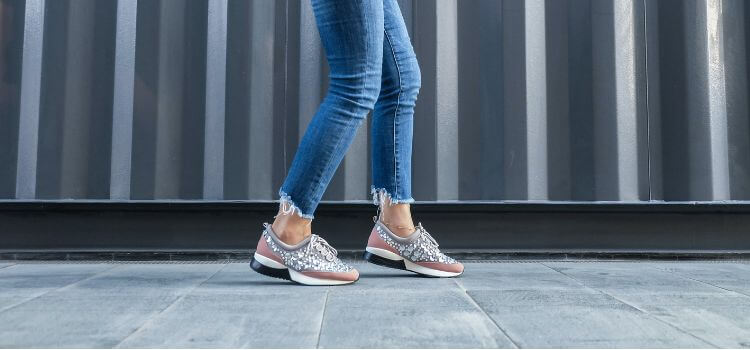
1. Testimonials from Individuals with Heel Spurs
Testimonials from individuals who have experienced relief from heel spurs offer valuable insights into the effectiveness of specific work shoes. These firsthand accounts shed light on the practical benefits and comfort provided by certain footwear options. Hearing how others have successfully managed heel spurs with particular brands or models can guide individuals in making informed choices.
Real-life testimonials often highlight the impact of supportive features like arch support, cushioning, and stability on alleviating discomfort. Exploring these experiences can be instrumental in selecting work shoes that not only address heel spurs effectively but also contribute to a positive and pain-free work experience.
2. Success Stories with Appropriate Work Shoes
Success stories involving appropriate work shoes provide compelling evidence of the positive impact such footwear can have on individuals dealing with heel spurs. These narratives often emphasize how specific brands or models have significantly improved comfort, reduced pain, and enhanced overall well-being. Individuals sharing their success stories may highlight features like arch support, cushioning, and stability as key factors in their positive experience.
These stories serve as inspiring examples for others seeking effective solutions for heel spurs, showcasing the tangible benefits that well-chosen work shoes can bring to one’s daily life. Exploring these success stories offers valuable insights and guidance in the journey to finding the most suitable footwear for managing heel spurs.
Comparing Different Types of Work Shoes

1. Steel Toe vs. Composite Toe
The choice between steel-toe and composite-toe work shoes is crucial for individuals managing heel spurs, and each option comes with distinct advantages.
Steel Toe:
- Durability: Steel toes are known for their exceptional durability and ability to withstand heavy impact.
- Protection: Ideal for environments with falling objects or compression hazards, providing reliable protection for the toes.
- Temperature Resistance: Steel toes can be less suitable for extreme temperatures, as they may conduct heat or cold.
Composite Toe:
- Lightweight: Composite toes are lighter than steel, enhancing overall comfort during extended wear.
- Non-metallic: Suitable for environments where metal detectors are present, as composite toes don’t set off alarms.
- Insulation: better insulation against extreme temperatures, making them a favorable choice for varied work conditions.
Ultimately, the decision between steel-toe and composite-toe work shoes depends on the specific work environment and individual preferences, with both options offering protective features for individuals with heel spurs.
2. Athletic vs. Dress Shoes
Choosing between athletic and dress shoes is a pivotal decision for individuals managing heel spurs, as each type caters to different needs and preferences.
Athletic Shoes:
- Comfort: Athletic shoes are renowned for their comfort, often featuring cushioning and support ideal for individuals with heel spurs.
- Shock Absorption: Designed for various physical activities, athletic shoes excel in shock absorption, reducing impact on the heel.
- Breathability: Many athletic shoes prioritize breathability, promoting airflow to keep the feet cool and comfortable.
Dress Shoes:
- Professional Appearance: Dress shoes offer a polished and professional appearance, suitable for formal work settings.
- Style: With a wide range of styles, dress shoes provide versatility, allowing individuals to maintain a sophisticated look.
- Support Options: Some dress shoes are designed with support features, catering to the needs of those with heel spurs.
The decision hinges on the nature of the workplace and personal comfort preferences, with both athletic and dress shoes offering viable options for individuals seeking appropriate footwear while managing heel spurs.
3. Slip-Resistant Options
Slip-resistant options in work shoes are indispensable for individuals managing heel spurs. These shoes feature enhanced traction, providing a secure grip on surfaces and reducing the risk of slips and falls. Especially crucial in workplaces with potential hazards like spills or wet conditions, slip-resistant shoes prioritize safety.
For those with heel spurs, this feature not only enhances stability but also minimizes the strain on the foot, contributing to a safer and more comfortable work environment. Choosing slip-resistant options is a proactive step in promoting overall well-being while dealing with heel spurs.
Making Informed Purchases
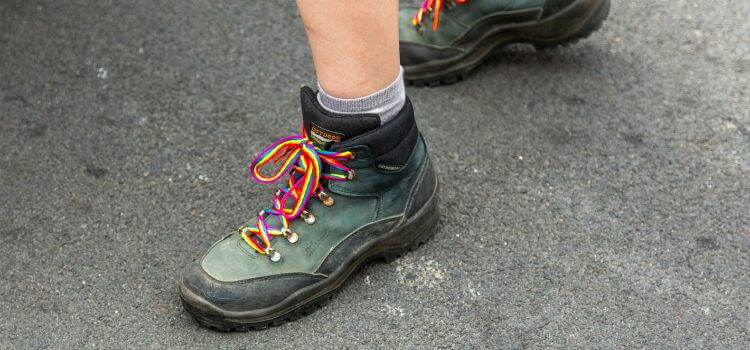
1. Reading Product Reviews
Reading product reviews is a valuable step in the process of selecting work shoes for individuals managing heel spurs.
Key Considerations:
- Insights from Users: Product reviews provide firsthand insights from individuals who have experienced the specific work shoes, offering valuable perspectives on comfort, support, and effectiveness in managing heel spurs.
- Potential Drawbacks: Reviews often highlight potential drawbacks or limitations of the shoes, helping prospective buyers make informed decisions based on real experiences.
- Comparative Analysis: Reading multiple reviews allows for a comparative analysis of different brands and models, aiding in the selection of work shoes that align with personal preferences and specific needs related to heel spurs.
By leveraging the information provided in product reviews, individuals can make well-informed choices, ensuring that their selected work shoes effectively address the challenges associated with heel spurs.
2. Consulting Podiatrists
Consulting podiatrists is a crucial step in finding the most suitable work shoes for individuals managing heel spurs. Podiatrists, specializing in foot health, can provide personalized recommendations based on an individual’s specific foot structure, gait, and the severity of heel spurs. Their expertise ensures that the chosen footwear aligns with both the medical needs and lifestyle of the individual, optimizing support and comfort.
Podiatrists may also offer valuable insights into additional orthotic options or modifications that can enhance the effectiveness of work shoes in managing heel spurs. By seeking professional advice, individuals can make informed decisions that prioritize both foot health and overall well-being.
3. Trying Shoes In-Store
Trying shoes in-store is a practical and beneficial approach for individuals managing heel spurs.
Key Advantages:
- Personalized Fit: In-store trials allow individuals to assess the fit and comfort of work shoes firsthand, ensuring proper sizing and support for heel spurs.
- Immediate Comfort Check: Trying on shoes in-store enables individuals to experience immediate comfort, addressing any concerns related to pressure points or discomfort associated with heel spurs.
- Testing Mobility: Walking or moving around in-store provides an opportunity to assess how the shoes perform during real-life movements, offering insights into their overall suitability for daily activities.
- Expert Assistance: Store staff can guide you in selecting shoes that align with your individual needs, enhancing the likelihood of finding the most supportive and comfortable option for managing heel spurs.
By physically trying on shoes before purchase, individuals can make confident decisions, taking into account both their specific foot conditions and preferences to effectively manage heel spurs.
Addressing Common Concerns

1. Can heel spurs be cured?
While heel spurs may not be fully cured, effective management strategies can alleviate symptoms and improve overall comfort. Treatment often involves addressing the underlying causes, such as wearing appropriate footwear, using orthotic inserts, and implementing lifestyle changes. These measures aim to reduce strain on the heel and manage associated conditions like plantar fasciitis.
While complete elimination may not be guaranteed, many individuals experience significant relief and improved quality of life with proper care and suitable interventions for heel spurs. Consulting with a healthcare professional for personalized guidance is crucial in developing an effective management plan tailored to individual needs.
2. Balancing Style and Functionality
Balancing style and functionality is a key consideration when selecting work shoes for individuals managing heel spurs. While prioritizing features like arch support, cushioning, and stability is crucial for foot health, it’s equally important to choose shoes that align with personal style preferences. Fortunately, many brands now offer stylish options that also provide the necessary support for heel spurs.
Striking the right balance ensures individuals can maintain a professional appearance while still benefiting from the comfort and functionality needed to manage heel spurs effectively. This allows for a seamless integration of both style and foot health in the choice of work shoes.
3. Budget-Friendly Options
Budget-friendly options are available for individuals managing heel spurs, allowing them to prioritize foot health without breaking the bank.
Key Considerations:
- Affordable Brands: Many reputable brands offer cost-effective work shoes designed with features like arch support and cushioning, catering to the needs of individuals with heel spurs.
- Sales and Discounts: Keep an eye out for sales, discounts, and clearance events, as these can provide opportunities to purchase supportive footwear at more affordable prices.
- Online Platforms: Explore online marketplaces and platforms that offer a variety of options at different price points, allowing for budget-friendly choices without compromising on necessary features.
- Seasonal Promotions: Take advantage of seasonal promotions or end-of-season sales, where prices on footwear may be reduced, making it an economical time to invest in supportive work shoes for heel spurs.
By being strategic and exploring various avenues, individuals can find work shoes that offer essential support for heel spurs without straining their budget.
Conclusion
Choosing the right work shoes for individuals managing heel spurs is a multifaceted process that involves considering various factors such as support, comfort, and personal style. Prioritizing features like arch support, cushioning, and stability is essential to alleviate discomfort and enhance overall foot health.
Real-life testimonials and success stories provide valuable insights, guiding individuals to make informed decisions about specific brands and models. Consulting with podiatrists and trying shoes in-store further refines the selection process, ensuring a personalized fit that caters to individual needs. While heel spurs may not be entirely cured, effective management strategies and the right choice of work shoes contribute significantly to symptom relief and improved quality of life.
Balancing style with functionality and exploring budget-friendly options further empowers individuals to find the optimal work shoes for heel spurs, fostering a harmonious blend of comfort, support, and personal preference in the workplace.
As an Amazon Associate, I earn from qualifying purchases

Leave a Reply